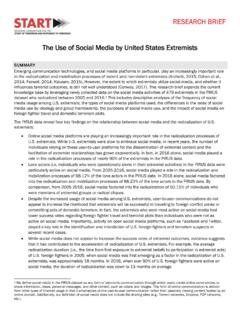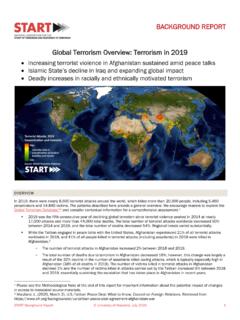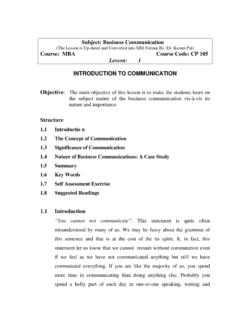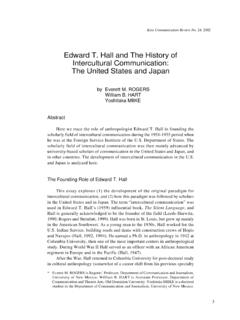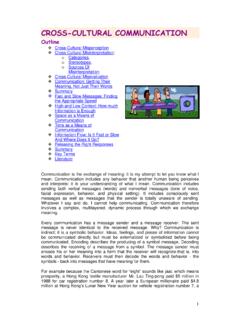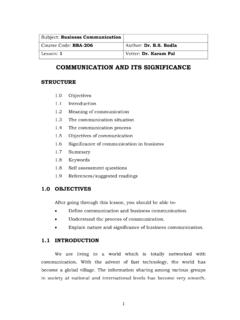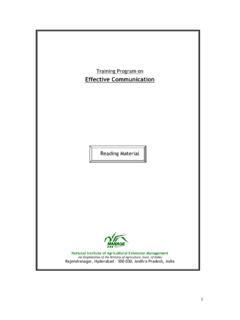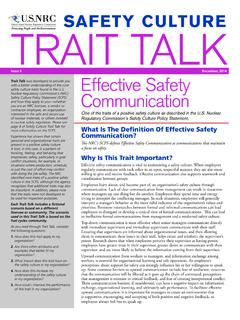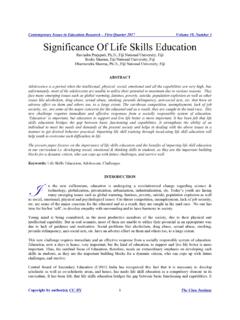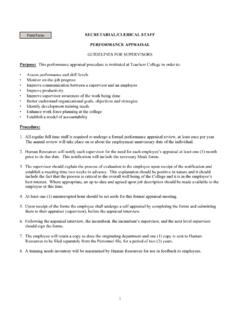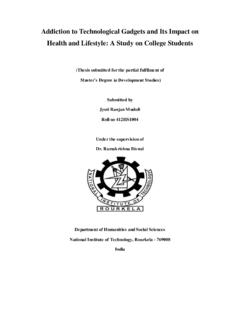Transcription of Understanding Risk Communication Theory - START.umd.edu
1 National Consortium for the Study of Terrorism and Responses to Terrorism A Department of Homeland Security Science and Technology Center of Excellence Based at the University of Maryland 3300 Symons Hall College Park, MD 20742 Understanding Risk Communication Theory : A Guide for Emergency Managers and Communicators Report to Human Factors/Behavioral Sciences Division, Science and Technology Directorate, Department of Homeland Security May 2012 National Consortium for the Study of Terrorism and Responses to Terrorism A Department of Homeland Security Science and Technology Center of Excellence Understanding Risk Communication Theory : A Guide for Emergency Managers and Communicators About This Report The authors of this report are Ben Sheppard, Research Associate at START, Melissa Janoske, doctoral student at the University of Maryland, College Park, and Brooke Liu, Affiliated Faculty Member for START.
2 Questions about this report should be directed to Brooke Liu at This research was supported by the Science and Technology Directorate of the Department of Homeland Security through Grant Award Number HSHQDC-10-A-BOA36 made to the National Consortium for the Study of Terrorism and Responses to Terrorism (START). The views and conclusions contained in this document are those of the authors and should not be interpreted as necessarily representing the official policies, either expressed or implied, of the Department of Homeland Security or START. About START The National Consortium for the Study of Terrorism and Responses to Terrorism (START) is supported in part by the Science and Technology Directorate of the Department of Homeland Security through a Center of Excellence program based at the University of Maryland.
3 START uses state of the art theories, methods and data from the social and behavioral sciences to improve Understanding of the origins, dynamics and social and psychological impacts of terrorism. For more information, contact START at or visit Citations To cite this report, please use this format: Sheppard, Ben, Melissa Janoske, and Brooke Liu. Understanding Risk Communication Theory : A Guide for Emergency Managers and Communicators, Report to Human Factors/Behavioral Sciences Division, Science and Technology Directorate, Department of Homeland Security. College Park, MD: START, 2012. Research sponsored by: National Consortium for the Study of Terrorism and Responses to Terrorism A Department of Homeland Security Science and Technology Center of Excellence Understanding Risk Communication Theory : A Guide for Emergency Managers and Communicators 1 Table of Contents Introduction.
4 2 Defining Risk Communication .. 4 Risk Characteristics .. 6 Risk Communication Theories and Models .. 7 Cross-cutting Theories and Models .. 7 Communication during the Preparedness Phase .. 11 Communication during the Response Phase .. 16 Communication during the Recovery Phase .. 18 References .. 22 National Consortium for the Study of Terrorism and Responses to Terrorism A Department of Homeland Security Science and Technology Center of Excellence Understanding Risk Communication Theory : A Guide for Emergency Managers and Communicators 2 Introduction This document reflects the themes and concepts developed in the accompanying Understanding Risk Communication Best Practices: A Guide for Emergency Managers and Communicators.
5 This report discusses and dissects theories and models relevant to federal, state, and local homeland security personnel and emergency managers faced with communicating risks within their communities. It first provides a detailed discussion on defining risk Communication , followed by risk characteristics to summarize how perceived dread and familiarity can affect risk messaging. Next, relevant theories and models1 are discussed in two parts: cross-cutting theories and models applicable across the preparedness, response, and recovery phases, and then additional theories and models that are most relevant within a specific event phase. As with the Best Practices document, many of the Communication approaches presented were not originally designed for a specific event phase, but nevertheless offer valuable insights that make them particularly suitable for a specific event phase.
6 This review presents concepts from a variety of academic disciplines, including Communication , sociology, anthropology, political science, and psychology. This report thus captures the diversity of the field of risk Communication , including an analysis of key strengths and weaknesses of dominant theories and models, offering risk communicators and managers the opportunity to readily identify the information and research most relevant to their interests. For decades, scholars have been working to improve risk Communication practice through developing, testing, and refining Communication theories and models that endeavor to explain the expected and unexpected impacts of risk Communication . These efforts have led to an abundance of scientific discoveries, but there is no single Theory or model that captures the full range of considerations that impact risk Communication efforts.
7 When defining event phases within this report, the following distinctions have been utilized: Preparedness: pre-event risk Communication outlining practical preparedness measures, including education on likely risk characteristics of various threats ( , differentiating factors associated with an improvised nuclear device terrorist attack versus an earthquake); Response (Imminent Warnings): crisis Communication and guidance regarding protective actions to take immediately prior to, in the midst of, or during the hours immediately following an event; Recovery: messages communicating needs and guidance in the weeks, months, and years following an event. The diagram below represents the relationship between the material presented in this document and material presented in the corollary Best Practices report.
8 For the best and most thorough overview, readers are encouraged to read and use both the Theory and Best Practices documents. 1 In this document, we distinguish between Theory and model where a model is an abstract representation of a system or process to help describe the consequences and interrelationships of decisions and events. A Theory , then, is a set of ideas intended to explain and predict events. National Consortium for the Study of Terrorism and Responses to Terrorism A Department of Homeland Security Science and Technology Center of Excellence Understanding Risk Communication Theory : A Guide for Emergency Managers and Communicators 3 Key insights from this document include the importance of: Identifying the most exigent publics for risk messages (CERC Model; STP); Developing appropriate messages for the most exigent publics (CERC Model; STP); Understanding how publics process risk messages (STP; heuristic-systematic model); Understanding how to incorporate divergent viewpoints into risk messages (deliberative process model).
9 Involving community members in disseminating preparedness messages (actionable risk Communication model); Ensuring information comes from multiple channels and is repeated often (actionable risk Communication model); Providing specific response strategies organizations and institutions can incorporate into their risk messages during crises (image restoration and repair Theory ; SCCT); Examining the following factors, which influence the effectiveness of response strategies: crisis type, an organization or institution s crisis history, and how publics perceive an organization or institution (SCCT); Understanding how publics perceive risk prior to disseminating risk messages (mental models; affect heuristic; extended parallel process model; Theory of reasoned action; RISP model); National Consortium for the Study of Terrorism and Responses to Terrorism A Department of Homeland Security Science and Technology Center of Excellence Understanding Risk Communication Theory : A Guide for Emergency Managers and Communicators 4 Identifying factors that affect how publics recover from risks that can be incorporated into risk resolution messages (CAUSE model; precautionary adoption process model); and Understanding the social context and secondary effects of risks (SARF).
10 Taken as whole, the findings from this document and Best Practices provide a comprehensive overview of the current art and science of effective risk Communication . Defining Risk Communication All communities need a way to communicate about present, emerging, and evolving risks . There is a general consensus that risk Communication is a two-way process between the communicator(s) and the recipients of the messages, but beyond that, different definitions often include unique variables and understandings. Risk Communication definitions are often similar to the definition offered by Covello (1992), who wrote of the process of exchanging information among interested parties about the nature, magnitude, significance , or control of a risk (p. 359).




